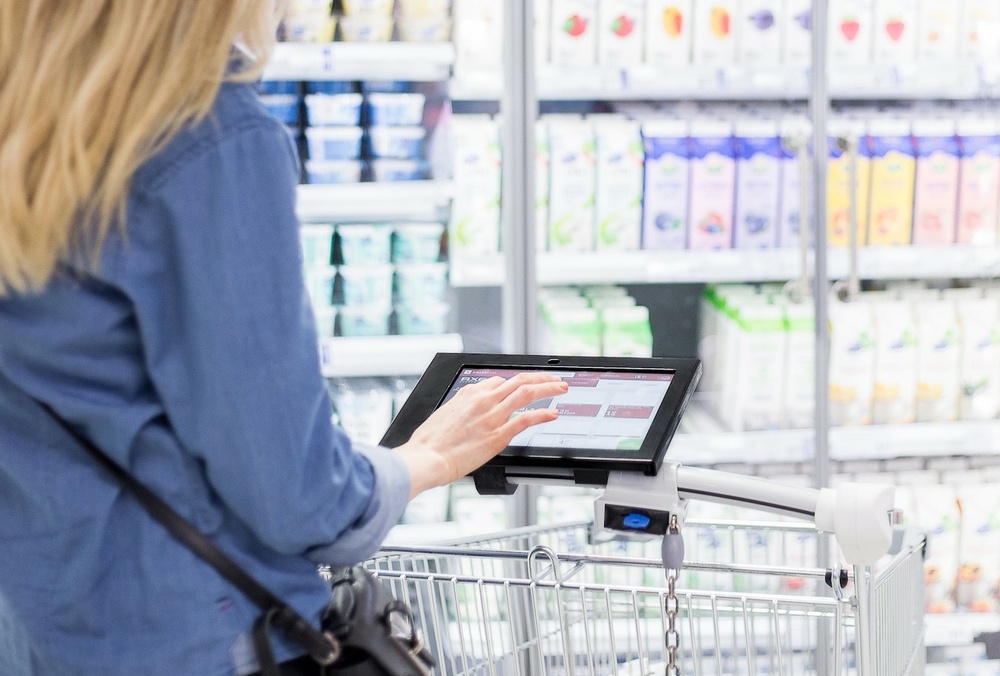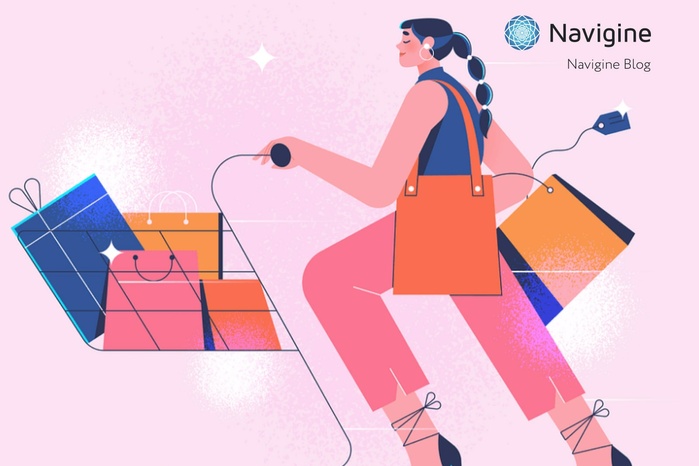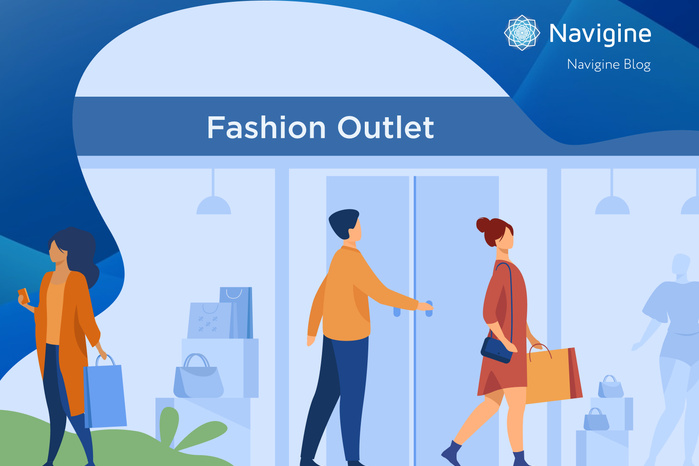The retail is one of the most unpredictable and volatile industries. Retail-companies need to be flexible on order to adjust to a constantly shifting customer behavior and to succeed in a new economic reality. Contemporary customers expect high-level service, personalized approach and timely implementation of advanced technologies. Business no longer has an opportunity to make decisions, based on analysis of previous experience, it has to predict audience’s wishes and expectations. And digital technologies are just what the doctor ordered.
The contemporary stores and malls play a significant role for almost every community, attracting people, entertaining them and stimulating them to spend here their time. According to the statistics, on average, shoppers visit groceries 6 times per month and on average they spend 41 minutes there. Often poor navigation and extended search for needed items are the main reason of staying in the shops so long. It is always a challenge for all retailers, how to increase sales, improve consumer shopping experience and avoid crowd congestions?
One well-established Finnish retailer decided to solve these problems with a cutting-edge mobile application, which provide customers with detailed recipes and assist in getting all products they need. Finnish company Smartcart has developed intelligent shopping cart solutions for retail & grocery trade. The implementation of this design required a sophisticated navigation system, provided by Navigine. Together with theNavigine-team Smartcart created one innovative personal shopping assistant, which helps consumers save more time due to product searching and navigation system through the store, smart notifications about special offers and store specific information.
This solution looks like an ordinary shopping cart equipped with a tablet. A customer takes a cart, chooses a recipe (or downloaded his own list of purchases) and starts aguided tour through a shop. The Navigine platform tracks a tablet via BLE beacons installed inside stores and leads shoppers to the needed department and products, choosing the most appropriate routes. Moreover, this system provides customers with special promotions while they stroll in the supermarket. All these special offers are indeed smart personal notifications, based on thorough analysis of previous shopping experience and customer behavior.

Smartcarts, upgraded with Navigine system, facilitate complicated navigation for shoppers inside big supermarkets, provide online experience for customers, enhance effectiveness of digital marketing tools and contribute to in-store communication between different brands and customers. Furthermore, retailers could benefit from such system due to advanced monitoring of visitor traffic. The solution collects shoppers motion and behavior analytics and displays the whole traffic picture as “heat” and “flow” maps. Such data illustrates an impact of advertising offers on customers’ routes and assists in optimization of logistics inside the store, product placement, as well as promotion and marketing campaigns. From customers’ standpoint, the Smartcart is not only a useful personal shopping assistant but also secure technology, which does not require cellular connection and does not capture personalized data.
Problems
The Navigine team spent almost 1.5 year on elaboration of Smartcart. This project required a lot of creativity and there were some important challenges. One of the most significant was special security boxes, where all tablets were placed. In order to prevent tablets from being stolen and being damaged,store authorities decided to put all devices into a metal frame, fixed on a cart handle. A metal box negatively influenced tablets capabilities, reducing a quality of input Bluetooth-signal.
The lack of various sensors on the tablets posed another obstacle for the implementation of thehigh technology navigation system. A general smart phone has a variety of different sensors, which are not widely used in our everyday routine, such as sensors for pressure, gravitation and magnetism, as well as gyroscopes and accelerators.The latter is used often in game applications, the mobile compass is based on inner magnetometer etc. Regardless of users’ awareness, the majority of contemporary devices have such sensors. So theNavigine system could depend not only on Bluetooth-signal but also on data, collected by these sensors. More importantly, special algorithms have an opportunity to identify via smartphone the direction of individual’s movement, length of one step and the pace of walking. More simply, such hi-tech solution predicts a trajectory and a route of each shopper.
But a conventional algorithm could not be used with the carts, because ordinary shopping carts have only one sensor – accelerator. Its data was not enough even for identification of movement direction. In addition, the rigid fixation of a tablet inside the box prevents a device from shaking and thus preventing us from measuring the step count and length.
And the last but not least of the challenges was a design of space inside a supermarket. Unlike buildings with a lot of hallways and walls (factories, malls or service centers), stores usually look like a large open space with 10-15 meters between opposite walls and high ceilings. The average accuracy within 2 meters (a rule for ordinary tracking system) did not fit the requirements of shopping space, because the width of a standard row is less than two meters, and the system simply could not properly distinguish the particular location of customer between two adjoining rows.
Solutions
The Navigine team solved all aforementioned obstacles by doubling the number of BLE beacons, installed inside the store, using sophisticated algorithms, based on dozens various parameters and developing a motion scheme of anaverage store.
Despite a complicated space configuration, customers usually move inside the supermarket according to a simple scheme. They could walk along a row (back or forward) or through a row (a long the main passages, joining all rows). This generated grid topology of building enhanced the accuracy of tracking and reduced the probability of errors to 5%.
Learn more about beacon technology for retail.
Results
Nowadays carts, upgraded with hi-tech navigation system, are available in 98 supermarket throughout the Finland. The most significant economic effects for the retailer are increase in sales and market share, 6% rise of the average bill, growing brand awareness and efficiency of marketing and promotion campaigns. At least, a half of allSmartcart users received special push-messages, 25% shoppers followed the advised routes to a place with the advertised product. A conversion of such marketing tool reaches 5%.
Another important advantage of the Navigine system is an opportunity for retailers to scale up this solution swiftly and cheaply for all supermarkets. Furthermore, such scaling could be implemented independently of company-designer. The Smartcart project was implemented in the first pilot stores together with theNavigine-team. After development, the most suitable scheme of BLE-beacon location and settings of algorithms a retailer obtained a chance to install the system in other stores by itself. Moreover, due to advanced expertise of Navigine specialists, the client could use common settings for all shops, and reduce costs and time spent on additional technical service. Nowadays, a retailer has an opportunity to implement this system without any extra costs in one-two shopsper week.
The Smartcart project is an example of a sophisticated hi-tech solution, which provides customers with fascinating shopping experience and is easily scaled up and financially efficient.



